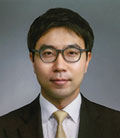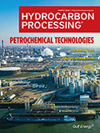Application of ring-type joint gaskets in a refinery
In refineries and petrochemical plants, ring-type joint (RTJ) flanges have been applied to high-pressure processes or sensitive areas that are susceptible to leaks.
IP: 52.14.233.132
This is a preview of our premium content. Thank you for your interest—please
log in or
subscribe to read the full article.
The Authors
Lee, S. - SK Energy, Ulsan, South Korea
Sang-Mo Lee has more than 26 yr of experience as a Fixed-Equipment Engineer at SK Energy. His main tasks include root cause analysis (RCA), troubleshooting, fitness-for-service (FFS) evaluation, maintenance procedures and technical support for the refining and petrochemical business. He earned a BS degree in mechanical engineering, and is qualified as a professional engineer for welding and metallurgy by the South Korean government.
Lee, S. H. - SK Energy, Seoul, South Korea
Se-Ho Lee is a stationary equipment engineer with SK Energy at the Ulsan complex in South Korea. He has more than four years of petrochemical industry experience, specializing in pressure vessel and flange leak troubleshooting and maintenance. He is credited with major roles and involvement in the development of standard specifications and maintenance procedures of stationary equipment. He graduated with a BS degree in mechanical engineering from Inha University in South Korea.
Jeon, S. - SK Energy, South Korea
Seokryong Jeon is team leader on the stationary equipment engineering team at SK Energy. He has more than 20 years of experience in reliability technology and project management in refinery and petrochemical plants. He received an MS degree and a BS degree in metallurgical engineering from Hanyang University in South Korea.
Jang, T. Y. - SK Innovation Co. Ltd., Daejeon, South Korea
Tae Young Jang is a Senior Researcher at the SK Innovation Institute of Technology Innovation in Daejeon, South Korea. He has more than 11 yr of petrochemical industry experience, specializing in computational fluid dynamics and finite element analysis. He received an MS degree in mechanical engineering from the Korea Advanced Institute of Science and Technology (KAIST).
Related Articles
From the Archive










Comments